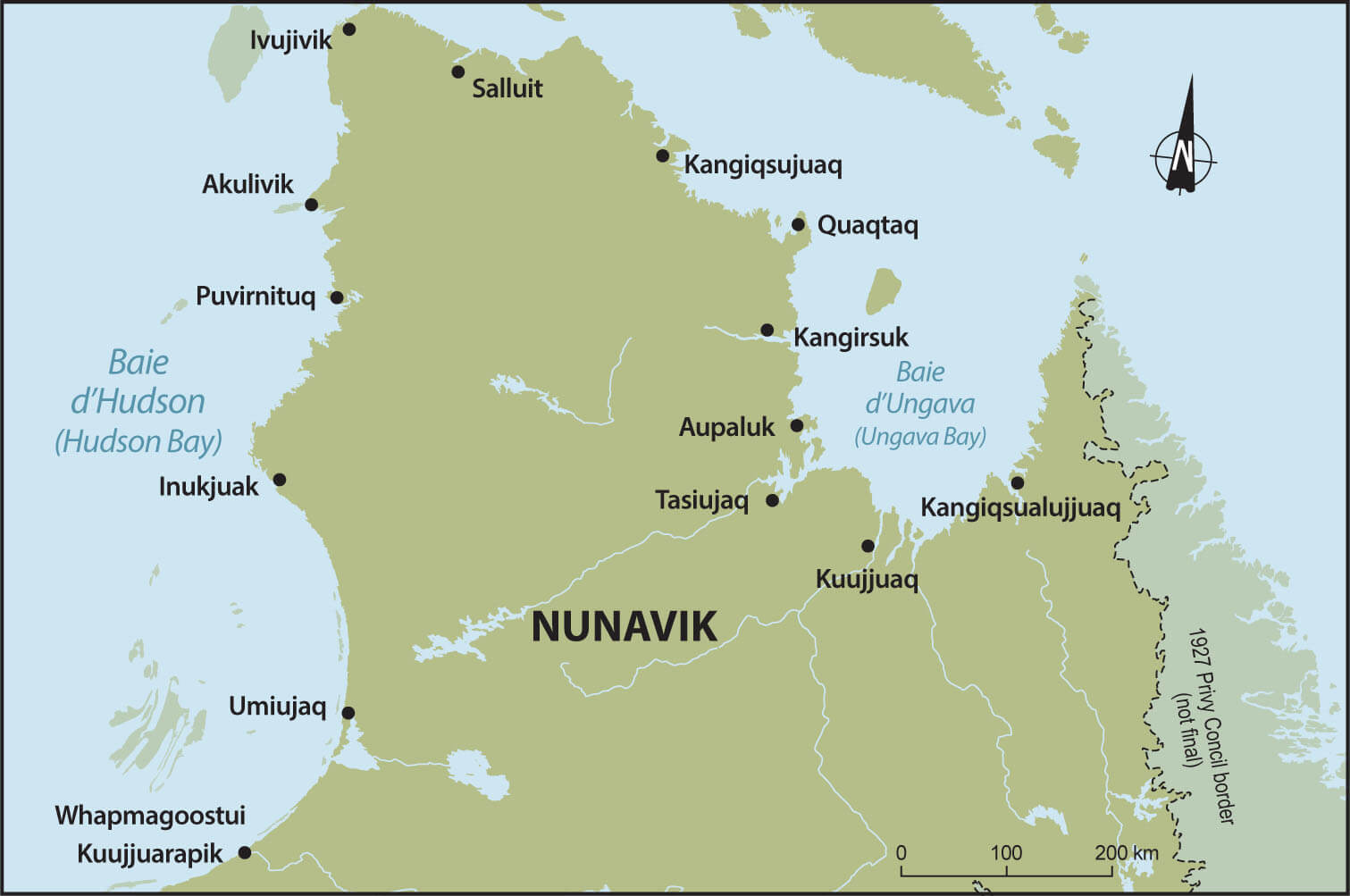Rate DN
Rate DN applies to domestic use, that is, electricity use in a dwelling, when the electricity is supplied by an off-grid system located north of the 53rd parallel, except for the Schefferville system.
Municipalities in which Rate DN applies

Rate DN applies to the following municipalities:
- Akulivik
- Aupaluk
- Inukjuak
- Ivujivik
- Kangiqsualujjuaq
- Kangiqsujuaq
- Kangirsuk
- Kuujjuaq
- Kuujjuarapik
- Puvirnituq
- Quaqtaq
- Salluit
- Tasiujaq
- Umiujaq
- Whapmagoostui
Energy-efficiency incentive rates
Most off-grid systems run diesel generating stations to meet the electricity needs of the customers they serve. The technology used by these generating stations, their need for fuel and the remoteness of the off-grid systems translate into high generation costs.
In cases such as these, it’s more efficient and cheaper to heat rooms and water directly with fuel than with electricity.
Why?
Because it takes a generating station a lot more fuel to generate the electricity required to heat a home’s rooms and water than it does a fuel-fired heating and hot-water system installed in the home.
That’s why, north of the 53rd parallel, Hydro-Québec has a rate structure designed to encourage customers to heat their homes and water directly with fuel, while enabling them to enjoy the same low cost of energy as customers south of the 53rd parallel for all other uses, such as lighting or electrical devices.
In addition, residential customers in Nunavik who don’t receive any government grants are eligible for the Efficient Energy Use Program (EEUP). Under the Program, they end up paying 30% less than what it would cost them to heat with electricity, no matter how the price of fuel fluctuates.
And if they are eligible for the EEUP, Hydro-Québec pays the maintenance and repair costs for their heating systems.
More information
To find out more about Rate DN, see Section 1 of Chapter 9 of the Electricity Rates [PDF 1.44 MB].
How to request electricity service
Off‑grid system
An “off‑grid system” is a power system not connected to Hydro‑Québec’s main grid.
System access charge
A set amount, expressed in dollars per month or cents per day depending on the applicable rate, that the customer must pay for the electricity service.
Beginning April 1, 2019, the term fixed charge was replaced with system access charge.
Energy
Power used by electrical equipment over a given period of time. Expressed in kilowatthours (kWh), energy is calculated as power, expressed in kilowatts (kW), multiplied by the time during which the power is used, expressed in hours (h).
The formula for energy is as follows: energy (in kilowatthours) is equal to power (in kilowatts) multiplied by duration of use (in hours).
Energy (kWh) = power (kW) x time used (h).
Power
Total amount of electricity supplied at a given time. Expressed in kilowatts (kW), power is the combined effect of voltage, expressed in kilovolts (kV), and current, expressed in amperes (A).

Winter period
Period from December 1 through March 31 of the next year, inclusive.
Summer period
Period from April 1 through November 30, inclusive.
Maximum power demand
Maximum power measured during a consumption period. It is the higher of the following two values: real power in kilowatts (kW), or a percentage (90% for domestic rates and small- and medium-power rates, or 95% for large-power rates) of the apparent power in kilovoltamperes (kVA).
Real power
Amount of electricity consumed in a useful manner to operate equipment, such as a motor or a heating or lighting system. Real power is expressed in kilowatts (kW).
Apparent power
Amount of electricity that Hydro-Québec supplies to a customer, expressed in kilovoltamperes (kVA). When it is used, apparent power breaks down into real power (kW), which runs devices, and reactive power (kVAR), which produces magnetic fields and which is not useful power for the customer.
Minimum billing demand (minimum demand)
The minimum amount of power that customers must pay for each consumption period, regardless of their electricity use. The threshold is set so that customers pay their share of the costs Hydro‑Québec incurs to meet their power needs at all times. The minimum billing demand is determined by the conditions of each rate, as indicated in the Electricity Rates.
- For all rates except Rate L, the minimum billing demand is automatically determined based on the previous winter’s maximum power demand.
- Rate L customers must set their own minimum billing demand, called “contract power,” based on their projected electricity use.
Rate
Electricity rate effective April 1, .
Low voltage: Voltage of 750 volts (V) or less.
Medium voltage: Voltage of more than 750 V, but less than 44 kilovolts (kV).
High voltage: Voltage of 44 kV or more.
